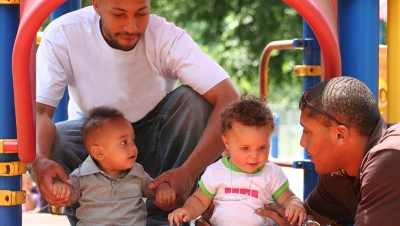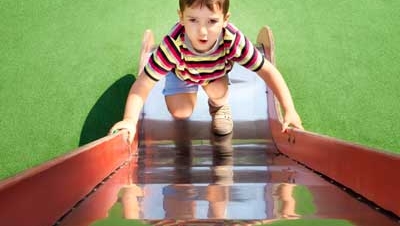There have been a handful of stories floating around as of late making the claim that today’s playgrounds are “too safe.”
Let’s just assume for a moment that that claim is true. If I were to pose the question, “How did playgrounds become too safe?” there would be, I’m sure, a quick response spanning a variety of reasons. That might include reasons like, “Playground companies are just trying to protect themselves because we live in a litigious society,” or “It’s all the lawyers’ fault,” or “It’s those parents who are looking to make a quick buck when their kid gets hurt,” or “It’s because of those parents who don’t watch after their kids,” or “Playground manufacturers don’t care about the kids, only about their bottom line so they go overboard,” or “Everyone is just trying to protect themselves,” and the reasons go on and on.
I have heard variations of all those reasons I just mentioned. Playground safety is a touchy subject, especially in some circles within our industry. It’s not my purpose in this column to point fingers because I believe, for the most part, those within the industry do have children’s safety in their very best interest. And they work really hard to protect children who just want to have fun.
Yes, I know we live in a litigious society. And yes, I think some parents overreact when their child gets hurt and are looking for someone else to blame—and pay. I also think playground manufacturers walk a tight line between keeping their equipment as safe as possible while still trying to keep their play structures fun. I hear the complaints that some of today’s play structures are boring because they offer little challenge to the kids playing on them. And I also believe lawyers call way too many shots in the industry, reviewing every little detail before a play piece is even built. (Insert your favorite lawyer joke here.) I guess that’s what you call a necessary evil.
Does it do any good to affix blame somewhere because playgrounds are “too safe?” What’s the real issue? Is there a big underriding societal problem that has channeled playground safety in the direction it’s going? Is it a sign of the times we live in? What part are “helicopter parents” playing in this debate? Are playgrounds really too safe? For that matter, what is considered “too safe?”
One New York Times article I read, titled, “Can A Playground Be Too Safe?” dated July 19, 2011 and written by John Tierney, said, “His [former New York City parks commissioner Henry Stern] philosophy seemed reactionary at the time, but today it’s shared by some researchers who question the value of safety-first playgrounds. Even if children do suffer fewer physical injuries—and the evidence for that is debatable—the critics say that these playgrounds may stunt emotional development, leaving children with anxieties and fears that are ultimately worse than a broken bone.”
The article then quoted a professor from Norway, who has studied children on playgrounds in Norway, England, and Australia. “Children need to encounter risks and overcome fears on the playground,” said Ellen Sandseter, a professor of psychology at Queen Maud University in Norway. “I think monkey bars and tall slides are great. As playgrounds become more and more boring, these are some of the few features that still can give children thrilling experiences with heights and high speed.”
Later in the article Sandseter is quoted as saying, “The best thing is to let children encounter these challenges from an early age, and they will then progressively learn to master them through their play over the years.”
The New York Times article also talks about playground surfacing. One of my favorite lines from the article is, “’What happens in America is defined by tort lawyers, and unfortunately that limits some of the adventure playgrounds,’ said Adrian Benepe, the current [New York City] parks commissioner’.” The article’s author then states, “But while he misses the Tarzan ropes, he’s glad the litigation rate has declined, and he’s not nostalgic for asphalt pavement.”
The article is an interesting read—it can be found on the New York Times website or just Google, “Are playgrounds too safe?” and one of the first hits will be the article. Definitely, the article explores one side of the argument. Others will quickly detail their side of the safety argument.
Who is right? Better yet, is anyone wrong? Regardless of the side, you’re on, it’s an interesting question: “Are playgrounds too safe?”












Add new comment